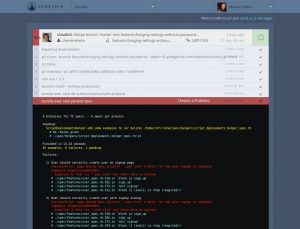In the buyer-centric, competitive business landscape, time is of the essence, especially when it comes to start-ups. Agile development offers a nimble framework for the rapid delivery of business value. With the volatile market situation and increasing competitive pressure, it becomes increasingly important to have a faster go-to-market cycle. With the Agile methodology software development, the products can be delivered faster, which is what an organization, trying to create a footing in the market needs. Although, going extreme and focusing more on common Agile processes can cause a start-up to lose focus, there are so many agile practices that can be incorporated for better revenue, speed-to-market, better risk management and better customer satisfaction.
Check out some of the best agile practices which can be easily incorporated in your business:
Version Control
Using Version Control is very important for your team’s collaboration even if you have a single developer or a team of 10 developers. A version control:
- Helps to collaborate between different programmers in the same team.
- Helps to maintain your codebase of different versions.
- It can revert back to older versions
- You can introduce experimental changes without making stable versions of your product
You will find plenty of affordable online services to run with a modern VCS system such Github and Bitbucket.
An Automated Build System
Having an automated build system helps when there is a big change in software development. Having an automated build system, enables your team to:
- It enables to produce a full, clean build, every time your team publish a new feature.
- When/If a software fails, you can get a history of which change broke the software.
- Take less time when publishing new features
- You can detect broken builds due to bugs as early as possible and this acts as safety net that ensures that all components of the system are working properly before publishing.
Without regular automated builds, small changes go unnoticed for long time and it leads to major problems.
Automated Continuous Integration
Continuous integration (CI) is a software engineering practice, where remote changes are tested immediately and reported on when they are added to a larger code base. With this practice all the members of a team integrate their work on a frequent basis, so there’s a system that automatically integrates a new feature or bug fix into the product. Each integration is verified by an automated build to detect errors quickly before its release. CI also includes generating build, automated tests and installing product and running tests on it.
Practicing CI allows you to:
• Reduce integration problems
• Develop software rapidly
• Notify when code changes break the system
• Help to detect, what caused the break in the system
CI helps the entire project to run according to core agile principles. Tools and services such as Codeship and travis-ci.org helps in adopting CI.
Automated Backups
Your team should always have an up to date backups of files and data, as it is very important for security and continuity. You should be able to recover whole system within 24 hours at any given point of time. There are tools, which helps you to achieve automatic backups. You can also use cloud storage service for backup.
Issue tracking
Quality assurance team is responsible for tracking defects efficiently, and ask someone from dev team to fix it. Source control systems such as Github and Bitbucket comes with issue tracking features.
At Carmatec, our agile application development services bring in better ROI, more visibility, better risk management, more flexibility and cost-control. Get in touch with us today to understand how we can help you implement agile methodology.














